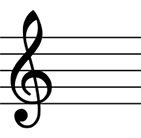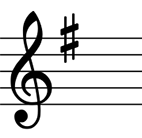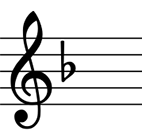
HOSTS- Jeremy Burns, Matthew Scott Phillips
TYPE- Theory
DURATION- 68:57
BUMPER MUSIC- "50 Shades of Great" (Area 47 Music)
ANNOUNCER- Mike Cunliffe
We celebrate our 50th episode by breaking the ice on the much anticipated topic of modulation.
This discussion will include an introduction to the concept of modulation, or change of key.
We will first cover modulation to closely related keys and what makes a closely related key. Then will discuss the pivot chords that can help to facilitate this technique. Also included will be some tips on how to hear key changes in music and recognize them on paper. And, of course, we will share some advice and tips on how to write them!

- Modulation, or change of key, is a technique that became popular in the post-Baroque era. It is most easily, and seamlessly, accomplished when moving to a CLOSELY RELATED KEY.
- While a TONICIZATION briefly tonicizes a particular chord in the same key, a MODULATION establishes a new key and it's complimentary diatonic chords.
- Going from a MAJOR key to a MINOR key, with the same tonic (or visa versa) is not considered a MODULATION. Rather, it is considered a MODE CHANGE because it is still based on the same TONIC center.
- Chords of a PREDOMINANT function are often used to aid a MODULATION to it's CLOSELY RELATED KEY.
A CLOSELY RELATED KEY either contains the same key signature as the original (in the case of it's relative major or minor key) or has the difference of one accidental. Let's look at our good friend C MAJOR (no sharps or flats):
C MAJOR
(no sharps or flats)

There are 5 possible CLOSELY RELATED KEYS to C MAJOR:
1- IT'S RELATIVE KEY
Recognize this? A minor is the "most" CLOSELY RELATED KEY to C major because it shares the same key signature.
A MINOR ( vi )
(no sharps or flats)

2-THE KEY A PERFECT FIFTH ABOVE
(or a PERFECT FOURTH below)
In this case, G MAJOR (1 sharp) makes a great candidate for a CLOSELY RELATED KEY because there is only one accidental more than the original.
G MAJOR ( V )
(1 sharp)

3- THE RELATIVE KEY TO THE KEY A PERFECT FIFTH ABOVE
(or a PERFECT FOURTH below)
E MINOR (1 sharp) is relative to the previous example (G MAJOR) and, therefore, a
CLOSELY RELATED KEY
E MINOR ( iii )
(1 sharp)

4- THE KEY A PERFECT FOURTH ABOVE
(or a PERFECT FIFTH below)
F MAJOR (1 flat) makes a great candidate for a CLOSELY RELATED KEY because there is only one accidental more than the original.
F MAJOR ( IV )
(1 flat)

5- THE RELATIVE KEY TO THE KEY A PERFECT FOURTH ABOVE
(or a PERFECT FIFTH below)
D MINOR (1 flat) is relative to the previous example (F MAJOR) and, therefore, a
CLOSELY RELATED KEY
D MINOR ( ii )
(1 flat)

A DIATONIC PIVOT CHORD has a diatonic function in both of the keys that it is connecting.
The best candidate for a DIATONIC PIVOT CHORD would be one of predominant function in the new key. In the progression below, we will MODULATE from I to V in a major key.
The vi chord will act as the PIVOT CHORD because, while if functions as vi in the original key (I), the very same chord will now function as
ii in the new key (V).

3 WAYS TO IDENTIFY A
DIATONIC PIVOT CHORD
1- Find the first chord that appears to be initiating a modulation. If your looking at notation, you may notice the introduction of some accidentals. Check the spot where they first appeared. If you are listening, you will feel like there was a mood change or maybe something will just catch your ear as different and new.
2- Look at the chord before this moment and reference it to both keys.
3- Analyze this chord and see how if it functions in both keys (the original key and the new key).
WRITING A
DIATONIC PIVOT CHORD
1- Write a progression in the original key. Make sure you establish the key by starting on the
TONIC and using a V - I cadence to solidify it.
2- Think of a chord common to both keys and take note of it’s function in both keys.
3- Write a progression in the new key and quickly establish it as the new key. Ideally the pivot chord will have a predominant function in the new key.
4-Continue with the your progression, in the new key, and solidify the key with an AUTHENTIC CADENCE (V - I).
- V is the most common, among keys, to modulate to. It is one accidental away from the original key.
- When we "modulate to V", the V we are referencing is that of the original key. The same chord will be I in the new key.
In a MAJOR key the most commonly used pivot chords are as follows (old key/new key):
I / IV, iii / vi, V / I, vi / ii
In a MINOR key the most commonly used pivot chords are as follows (old key/new key):
i / iv, III / VI, v / i
When we move to V in a minor key the "vi/ii" possibility goes away. This is because the VI chord has a MAJOR quality in a MINOR key.
After we modulate to minor V, that chord (now the ii•) has a DIMINISHED quality and therefore doesn't quite function the same.
- Don't confuse MODULATIONS with MODE CHANGES. For example, moving from C major to
C minor is a mode change (Ionian>Aeolian). But because C is still the tonic, it is not considered to be a MODULATION.
- Try creating your own MODULATION to a CLOSELY RELATED KEY.
- Don't neglect the MINOR keys while working on these MODULATIONS.
- While modulating to v in a MINOR KEY,
VI (a MAJOR chord) can not function as a PIVOT CHORD. This is because, in the MINOR v key, ii•
(it's complimentary chord) is a DIMINISHED chord.
